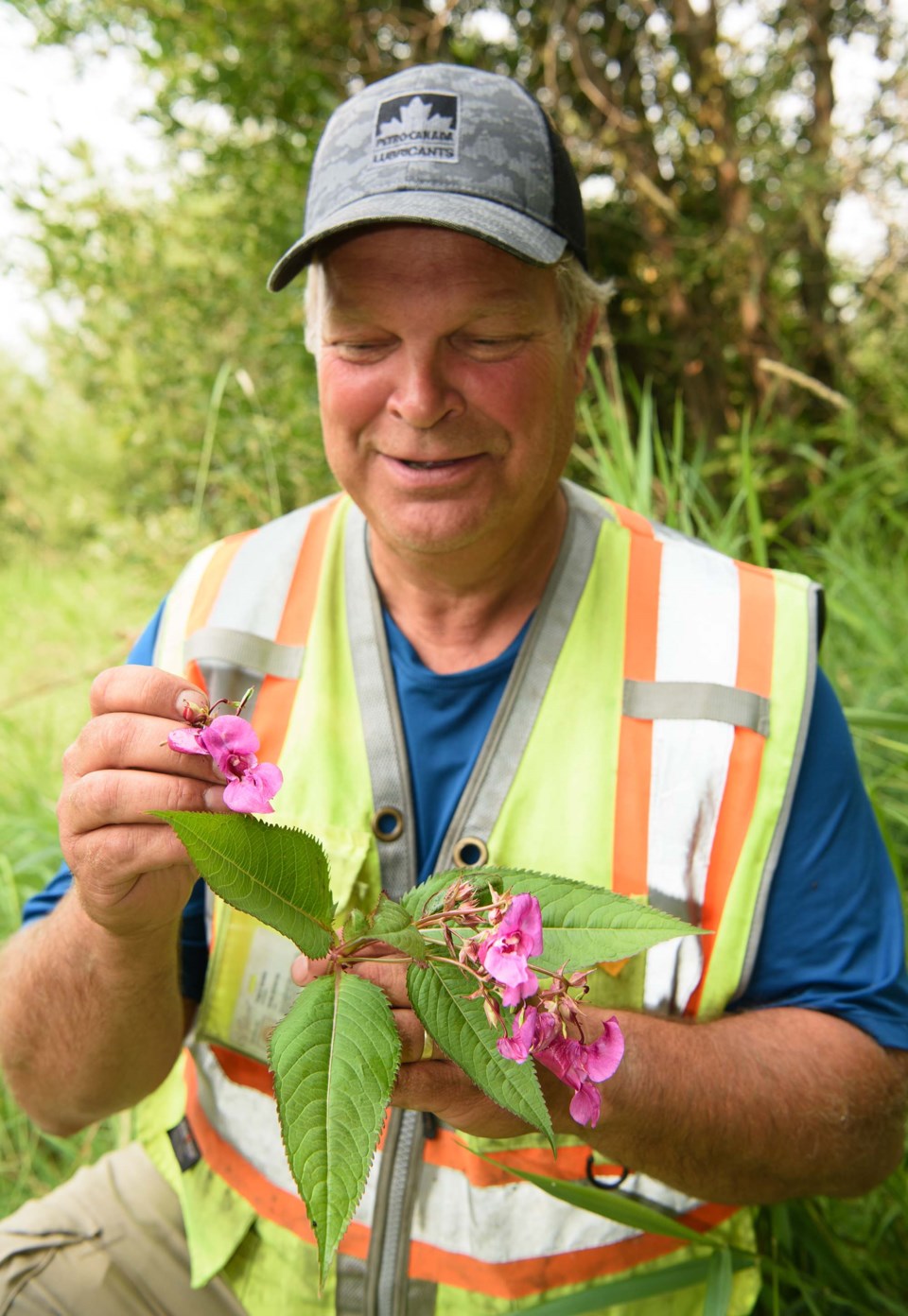City staffers will be at Olds College next week to talk about alien invaders — some of which are already here in St. Albert.
About 200 people from across North America will be at Olds College this March 5–6 for the 2025 Alberta Invasive Species Council (AISC) Conference. The conference will discuss the latest research on non-native (alien) plants and animals that threaten Alberta’s biodiversity.
Invasive species have the potential to cause great harm to St. Albert’s native ecosystems and infrastructure, said City of St. Albert environmental co-ordinator Melissa Logan, who is one of about six city employees set to attend the AISC conference. St. Albert has previously dealt with infestations of invasive goldfish and purple loosestrife, and was now trying to evict invaders like Himalayan balsam and flowering rush from the Sturgeon.
Logan said this conference will help city staff learn how to stop and control invasive species before they run rampant.
Hot topics
AISC executive director Megan Evans said the hot topic at this year’s conference was aquatic invaders, specifically zebra and quagga mussels. Introduced to Canada’s Great Lakes in the ballast of ships from Europe, these roughly two-centimetre-long mollusks are notorious for clogging water intakes, covering beaches with razor-sharp shells, and eating everything else in the water out of house and home.
“They just breed like crazy,” Evans said, and would be a huge threat to irrigation systems in Alberta if they reach here.
These mussels showed up in Canada in the 1980s and are now approaching Alberta from both the south and the east, said Aquality Environmental owner Jay White, a speaker at next week’s conference who has studied aquatic invasives.
“It’s not an ‘if’ [but] a ‘when’ we’re going to get them in Alberta and B.C.”
Whirling disease has also been spotted in the North Saskatchewan River watershed, White noted. This invasive parasite causes trout to whirl about, making them easy prey.
“It’s decimated about 80 per cent of the trout population in a lot of places,” White said, and could be a huge threat to Alberta’s cold-water fisheries if not contained.
City of St. Albert parks operation supervisor Erin Pickard said she hoped to hear about Dutch Elm Disease at the conference. Transmitted by bark beetles, this fungal disease was spotted in Edmonton last fall, and could wipe out 11 per cent of St. Albert’s trees should it reach here. She also planned to learn more about the emerald ash borer, which was approaching Alberta from the east, south, and west.
“More than 40 per cent of our planted inventory is ash, so [this insect] has the potential to have a huge impact on our streetscapes,” Pickard said.
Alien defence
Pickard said city crews have stepped up their maintenance for local elms and continue to enforce the April 1–Sept. 30 elm pruning ban to guard against Dutch Elm Disease. They are also teaching the public how to spot and stop invasive plants and animals in town through Weed Warrior workshops and the Pest of the Week series.
White said residents can stop the spread of aquatic invaders by making sure to clean, drain, and dry their boats and gear after use. If you have firewood, Evans said to burn it on site instead of moving it, as firewood was a common vector for tree pests.
“Burn it where you buy it,” Evans said.
Logan encouraged St. Albert residents to report any sightings of invasive species to public works. Sightings can also be logged on the EDDSMapS app.
Visit abinvasives.ca for information on invasive species in Alberta.



